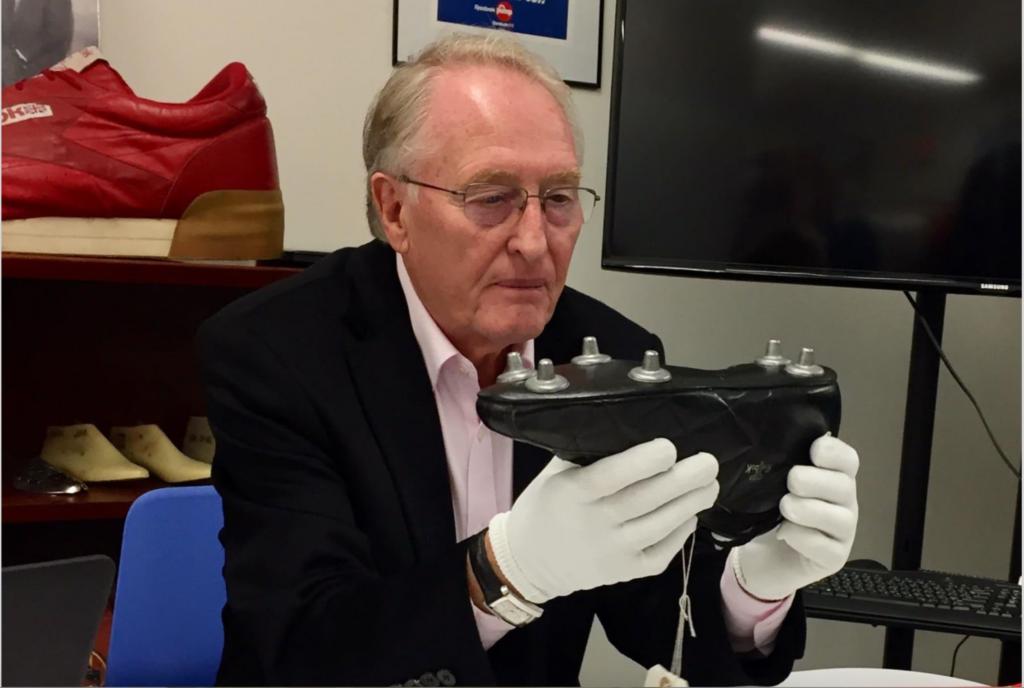Joe Foster is the co-founder of Reebok – one of the world’s most famous sports brands! From humble beginnings in Bolton, UK, to a billion dollar brand – Joe reveals the key to his success, plus offers advice for all entrepreneurs looking to start their own company in the digital age…
Your Grandfather founded a shoemaking business in Bolton, so you could say that shoemaking from an early age was in your blood. Please could you briefly share your origin story with our readers…
My grandfather learned the skill of a cobbler from his grandfather, who apart from street shoes also repaired cricket boots.
My grandfather was a member of his local running club and wondered if he made a pair of lightweight running shoes with spikes in the bottom, would it improve his performance? It did and in doing so was the start of his business, which became famous over the years as J W Foster & Sons. Many world records were broken and Olympic gold medals won in his deluxe hand-sewn track shoes!
My Grandfather died in 1933 and I wasn’t born until 1935 some 18 months later on his birthday, May 18th. Grandmother insisted I had brought my name with me – Joe Foster.
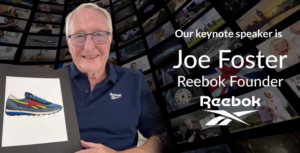
Is it true that the name ‘Reebok’ came from an American Webster’s Dictionary you won in a race in Bolton?
Yes! My brother Jeff and I left the family business in 1958 to set up our own sports shoe business with the name Mercury Sports Footwear.
By 1960 we were advised to register the name to avoid any future legal challenges. To our bitter disappointment, we found the name was already registered and the owners offered to sell it to us for £1,000 but money was tight and we just couldn’t afford it. So we were advised by a patent agent to find a new name. The agent told me to bring at least 10 names to test against the register, pointing through a window in his Manchester office to a sign above a shop – ‘Kodak’. “It’s a made-up name,” he told me, “so they own it”.
Back in our small office, myself, Jeff and our wives embarked on the mission: 10 names. Now, how do you find 10 names that will give you the passion and belief you need? We made a start: Cougar… Falcon… Just two of the names we felt we could believe in.
But, back in 1943, I was 8, and World War II meant holidays by the sea were substituted by local events – like a local 60 yards race – which I won! However, to my disgust, the prize was a dictionary. It took some time for me to discover it was an American dictionary, with lots of different spellings to my school dictionary.
Fast forward to 1960 and to the challenge of 10 names and we are losing the plot! Without much expectation I reached for my Websters’ Dictionary, flicked through to the letter ‘R’ – a letter I simply liked the sound of – and slowly leafed through until I stopped at R-E-E-B-O-K, what’s that? I read it’s a small South African Gazelle – GAZELLE – we are a running company! Perfect!
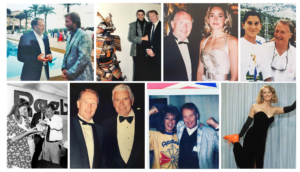
At the start of your business journey, you’ve previously stated were you initially concerned about other companies: did you see them as competitors?
My concern was, after returning to J W Foster & Sons from doing two years of National Service, both Jeff and I could see the business was failing badly. Adidas and Puma were already taking their business.
My father and uncle (the Sons in J W Foster & Sons) were running the business or at least arriving on workday mornings. But, their days were spent either not speaking or arguing – sometimes even fighting. Jeff and I tried our best, sometimes pulling them apart – “It’ll be yours to do what you like when Bill and I are gone” were my father’s favourite words!
When Jeff and I set up our own small company Adidas and Puma were not competitors; they were too big. We had to find our own space, which we did, by specialising in cycling, North of England running events and rugby league. Eventually, when we moved into the US market, we owned the new fitness space for women: aerobics… More on this a little later!
How do you measure the success of something? Is it money or popularity?
Money is always useful and helps you to move quickly when opportunities arrive. But the challenge is being alert to or creating new opportunities, or simply pioneering a new way of doing something better.
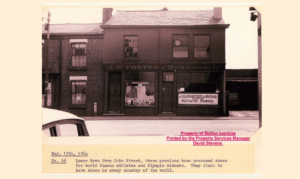
First of all, it’s leadership, which doesn’t mean showing everybody how it’s done, but rather encouraging others to be creative, thus developing a winning culture of inclusiveness! If you have the right culture and the right people you will do the right marketing.
Besides traveling, what other hobbies do you have?
We do love the coffee society and look for great coffee shops wherever we travel. Oh, and I’m on a mission again, to spread the word and get my book Shoe Maker on the Bestseller list!
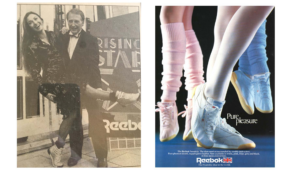
Integrity and belief in what you are doing. In those early days you don’t need anything more than that, since it will become infectious and attract customers and people to join you as your business grows.
Please tell us how you met the American businessman Paul Fireman and how this meeting impacted the future growth of Reebok as a brand…
My first trip to America was in 1968, but it was 1979 before I met Paul Fireman. We were on the verge of getting 5 stars for our Aztec shoe from Runner’s World, the US magazine which almost every runner in America purchased on a monthly basis.
Paul was operating a small outdoor company with his brother and brother-in-law. He needed something new in his life and if Aztec succeeded in getting 5 stars he wanted in.
Paul was hungry and wanted a change. The combination of Paul and Stephen Rubin’s credit line allowed Reebok USA to take full advantage of the impact a 5-star shoe had on the market.
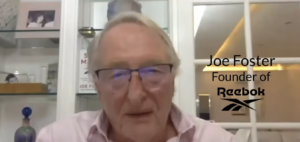
In those early days of Reebok, it was looking for where the energy was. In the UK Athletics Weekly and Cycling magazine was directed at our consumers. In the USA, Runner’s World became the runners bible with up to 35 million runners looking for events and information. This drove the American market and awarding us 5 stars for our ‘Aztec’ trainer gave us tremendous visibility for the brand.
“Don’t ever give up” – motivational words from yourself. So tell us, did you have a moment of weakness, and did you ever feel like giving up? If so, what made you keep going?
We had challenging moments, but mostly this would spur us on to increase our efforts and determination to succeed. I can’t remember ever being a moment when these challenges made us question ‘why are we doing this?’
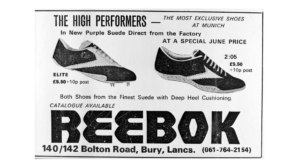
For a long time, I recognised that the American market would be key to our success. The journey took me 11 years, but it was the growth of road running that brought with it an opportunity.
As I mentioned above, when Runner’s World became the ‘must read’ and awarded us 5 stars for our ‘Aztec’ training shoe, we had achieved the ‘hook’ that gave us visibility.
Reebok was a pioneer in 1982 when it turned its attention to women’s fashion in sports and debuted the Reebok Freestyle aerobics shoe – the first athletic shoe designed for women. With that, Reebok evolved from a brand focused primarily on performance to one with fashion in mind. Was this a conscious decision to attract a new market, or part of a wider business plan to expand the brand?
When Angel Martinez saw aerobics in the city of its birth, Los Angeles, his instinct told him this was an opportunity.
We were a small running shoe company, but ‘Freestyle’ was to change all that! The shoe was designed especially for aerobics with a women’s fit. The result was we became a women’s fitness company. Running, although remaining integral to the company, became secondary in the focus on growth as demand for ‘Freestyle’, firstly in the USA and then globally, took us from a $9 million to nearly a $1 billion company in less than five years!
Reebok led sports footwear brands into the fashion industry and sales grew to nearly $4 billion by the late 1980s.
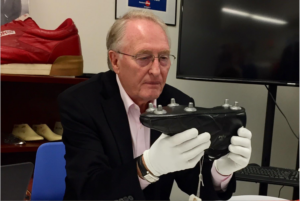
My family tradition as sports shoe manufacturers dates back to 1895 and over the years we transformed from being shoemakers to becoming a marketing and fashion company.
When building a brand, control of sales and marketing is essential to success. So, when in the late 1960s, my UK distributor’s business failed, the result was a near catastrophe for the Reebok brand.
Faced with no immediate outlet for the bulk of our production I had to cut our workforce by 50%. Some good people would be walking out of the factory for possibly the last time. I felt guilty, I had let them down and telling them face to face was difficult beyond belief. But, they were all gracious, asking if they could come back when things improved. None of them thought this was terminal. Indeed, many industry friends came to our aid, with shoe orders and suppliers delaying payments. We were even sought out by a new distributor! We survived and in three months all our workers arrived back in the factory.
You won the Drapers Footwear Award for 2021 – congratulations! What was it like to receive such a prestigious award?
It was a lifetime achievement award and I was very proud to receive it. The award has pride of place among the few pieces of memorabilia I still possess. The rest, including my grandfather’s desk, are part of the Reebok Archive in Boston Mass, USA.
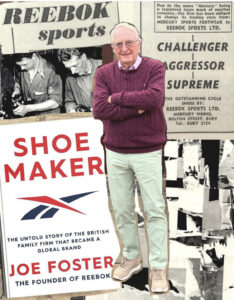
The story begins with my grandfather inventing the spiked running shoe back in 1895 when he was just 15 years old. In his 54 years, his business J W Foster & Sons’ athletic shoes had been worn by many world record breakers and Olympic gold medal winners. He also supplied most of the UK’s leading football clubs with training shoes.
My memoir also focuses on my many challenges, experiences, meeting Hollywood stars, and taking Reebok to the No.1 global sports brand!
What’s the most important skill to succeed in today’s business climate?
Building a culture that attracts people and makes them feel part of a brand is an essential quality.
Despite changing its name to the Macron Stadium in 2014 and now being known as the University of Bolton Stadium, people still refer to the football ground in your home town as ‘The Reebok’, how proud are you of this fact?
It’s quite incredible, but it’s easy to underestimate the impact Reebok had in Bolton, and when the stadium was built Reebok was sponsoring the Bolton Wanderers FC shirts.
The stadium is part of a much bigger shopping mall, which was named ‘Middlebrook’ by the developers. However, it became known locally as ‘The Reebok’ when we took the stadium name rights for the first 10 years. And although the stadium name has changed twice the whole development is still referred to as ‘The Reebok’. We are both proud and amused.
Finally, do you have any advice for any budding entrepreneurs looking to start their own company?
For an idea or plan to succeed you must believe in it and at that point make it happen. Too much thinking and too much advice may stop you and leave you regretting not taking that step. It may not work, but failure is only a lesson on the way to success for someone determined to succeed!


